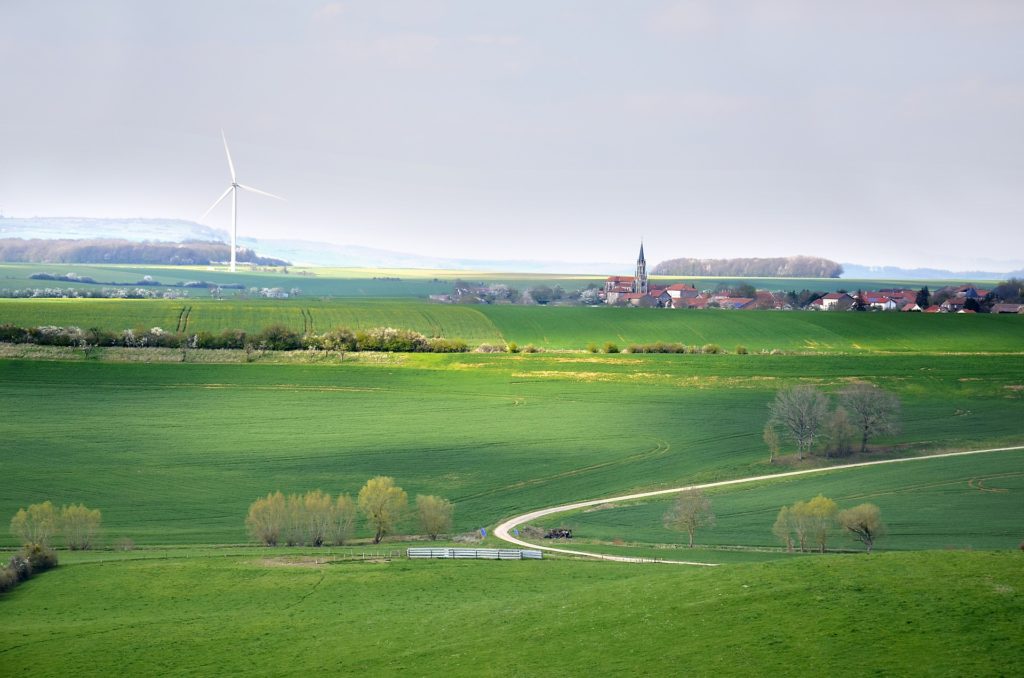
Reflections
 By Dr. Indira Khurana*
By Dr. Indira Khurana*
In March 2021, the World Health Organisation (WHO) established a new Council on the Economics of Health for All, chaired by Mariana Mazzucato, Professor in the Economics of Innovation and Public Value at University College, London. This Council will focus on links between health and economic growth which go beyond health and healthcare systems. This is a welcome move, albeit a bit late in the coming.
Proponents argue that economic growth is necessary for improvement of quality of life and standard of living, both which are highly subjective in nature. Unfortunately, the means used for this growth have come at the cost of unsustainable nature destruction and environment degradation and have actually defeated that very purpose.
The COVID 19 setback

What has been the global burden of this pandemic so far? Assessments have managed to touch only the tip of the iceberg. For example:
- As of August 2020, the global cost of the COVID 19 pandemic was estimated to cost between $8.1 and $ 15.8 trillion globally: The maximum cost is almost double the minimum.
- The pandemic laid bare the social fault lines as inequality gaps and widened and deepened:
- According to the Oxfam Report on Inequality released in January 2021, the pandemic has the potential to lead to an increase in inequality in almost every country at once, the first time this has happened since records began. While billionaire fortunes returned to their pre-pandemic highs in just nine months, recovery for the world’s poorest could take a decade.
- Bridging the yawning gender gap has increased by a generation from pre-COVID 19 days of 99.5 years to 135.60 years in 2021.
- In the United States, race, gender, age, and education have affected vulnerability to COVID-19 infection. Yet, consequences likely extend far beyond morbidity and mortality.
- In a paper published in a February 2021 issue of The Proceedings of the National Academy of Science (PNAS) , the authors argue that pandemic precarity disproportionately affects historically disadvantaged groups, widening inequality.
- A 45-country rapid assessment undertaken by the World Bank, revealed significant populations running out of food or reducing their consumption. Reduced calorie intake and compromised nutrition threaten poverty and health and could have long lasting impacts on the cognitive development of children. In 2020, the World Food Program reported that hunger figures would almost double by the end of 2020, from the pre-pandemic number of 135 million to 265 million. The Global Hunger Index 2020, calculated on the basis of undernourishment of the population, child stunting, wasting and child mortality, has placed India at the 94th position amongst 107 countries. Studies reveal that India could lost up to 4 per cent of its GDP and up to 8 per cent of its productivity due to child malnutrition.
- The COVID-19 pandemic created the largest disruption of education systems in human history, affecting nearly 1.6 billion learners in more than 200 countries. Closures of schools, institutions and other learning spaces have impacted more than 94% of the world’s student population. In India, the shutting down of schools and the shifting from traditional classrooms to digital platforms is pushing a large number of students out of school due to the digital divide and increasing learning inequality.
Even these will need recalibration as more data emerges and the impact of the series of infection waves begin to filter in.
Wither Sustainable Development Goals (SDGs)?

The United Nation’s Sustainable Development Goals (SDGs) adopted through a refreshingly consultative process provided an international framework to move by 2030 towards a more peaceful, equitable, resilient and prosperous world, and achieving this within planetary boundaries.
The pre-pandemic progress against most of these goals was already tardy. The Sustainable Development Goals Report 2020 inform of the insufficient progress made and warns of the regressive impact of the corona pandemic:
- Prior to COVID 19, the world was already off track for SDG 1: Projections suggest that 6 per cent of the global population would still be living in extreme poverty. As of September 2020, an estimated 71 additional people would still be living in extreme poverty due to COVID 19. It’s important to note that we are still in the throes of the pandemic.
- For SDG 2, to end hunger, the world was already faltering before the pandemic – The population affected by food insecurity had increased between 2014-2018. The pandemic has now increased pressure on production systems, supply chains and household incomes.
- The most susceptible groups are being hit hardest by the pandemic, thereby threatening SDG 10.
- Tackling global poverty and water and food insecurity is intrinsically linked to mitigating climate and land use change. Unfortunately, the report shows how the world is off track to meet the education goal (SDG 4) and goals towards environmental sustainability (Goals 7,8,9, 11-15).
- SDG 16 around peace, justice and strong institutions and SDG 17 on international cooperation appear to be on shaky ground given the hardening stance of political leaders towards migrants and the increasing civil protests across continents.
Barking up the wrong tree?
Questioning the causes behind this pandemic and acting on the dire warning that more pandemics await the world are lost in the brouhaha of implementing massive vaccination programmes against the COVID – 19 virus amidst rising infection numbers.

Several questions beg answers: Is this the kind of life humans want? Of racing against time, developing new vaccines and treatments, repurposing drugs and revamping vaccines to be effective against mutants? Always scrambling to respond, sometimes again and again as we encounter mutant strains, rather than focus on prevention in the first place?
Also read:
- Future trading in water does not bode well for people or the planet
- COVID-19 warrants water issues plucked off the back burner
When economic growth comes at the cost of uncontrolled use of natural resources that benefits only a few and further deepens inequality, it results in the abuse, destruction, exploitation and pollution. This approach is now actually having a deadly impact on human health and standard of living. The examples are many and range from large and helpless populations breathing toxic air and drinking poisonous cocktails to quench thirst, to weathering once in a lifetime storms and freak weather events because of climate change. The struggle for survival that Texans faced due to the previously unheard-of snow and ice storm that disrupted electricity supply and burst drinking water pipes is a case in point.
According to WHO, “The most cost-effective investments in health are those that prevent or delay people needing to use the health system, by addressing the reasons people get sick and die – in the food they eat, the water they drink, the air they breathe, and the conditions in which they live and work.” But when the cost of economic growth escalates the need to use health systems, clearly there is a problem. This is when the math gets skewed as costs on healthcare mount.
Correcting the math
Evidence is mounting on the need to shift strategies and approaches that are aligned to nature and address – not deepen – inequality.
Researchers from the University of Cambridge found that restoring land or keeping land in its natural form is generally more economically beneficial than converting land for human private activities like agriculture and logging. In a paper published in March 2021, the researchers synthesized recent data from 62 sites worldwide. Their findings also indicated that at current levels of habitat conservation, conserving and restoring sites typically benefits human prosperity.

Intact ecosystems may play an important disease regulation role by maintaining natural disease dynamics in wildlife communities and reducing possibility of contact and pathogen transmission among humans, livestock and wildlife.
As forests become closer to humans due to forest encroachment or deforestation, viruses also get closer to humans. Some 60 per cent of all known infectious diseases and 75 per cent of emerging infectious diseases are due to zoonotic viruses, that is spilling over form wild animals to humans. India is amongst the top geographical hotpots for zoonotic diseases and the recent has seen the emergence of high priority neglected zoonosis. The Indian Council of Medical Research attributes the spread of monkey fever or Kyasanur Forest Disease from the Kyasanur Forest in Shimoga district of Karnataka to districts in Karnataka, Kerala, Goa, Maharashtra and Tamil Nadu to deforestation and climate change. Burning of rainforests in Indonesia led to the emergence of Nipah virus in Malaysia.
Newly emerging and re-emerging infectious diseases have threatened the human race since the Neolithic revolution some 12,000 years ago, when hunter-gatherers settled down and began to domesticate animals and cultivate crops. With this began the systematic manipulation of nature by the human race and the subsequent emergence of diseases such as plague, small pox, falciparum malaria, measles and many more.
The human genome took 8 million years to evolve by 8 per cent. For many animal RNA viruses, evolving by 1 per cent is a matter of days. No wonder then the world is witnessing the emergence and reemergence of zoonotic diseases, wherein the viruses are transmitted from animals to humans as we repeatedly get closer to animals and their associated viruses.
The clear link between deforestation and virus emergence suggests that a major effort to retain intact forest cover would have a large return on investment, even if the only benefit is to reduce virus emergence event. According to a paper published in Science by Andrew Dobson and others from Princeton University in July 2020, action to prevent future pandemics before they start would cost between $22 to $31 billion annually. These costs including monitoring of spillover of viruses from wild animals, to livestock and humans and reducing deforestation amongst others. The costs of the COVID 19 pandemic are estimated to range from a low value of $8.1 trillion to a high of $ 15.8 trillion.
Given the onslaught of costly emerging diseases in the past 20 years, the authors urge that recovery packages follow approaches that reduce pandemic risk. As the rate of novel diseases increases, so will their economic impact. Postponing a global strategy to reduce pandemic risk would lead to continued soaring costs.
Valuing ecosystems and nature: A double edged sword?

In March 2021, countries took a significant step to enable public authorities to put a value to their environment. At the annual meeting of the UN Statistical Commission, whose members are responsible for setting and verifying standards for official statistics in their countries laid out a set of principles for measuring ecosystem health and calculating monetary values. However, just like in the case of water, the question that begs an answer is: How does one value nature? Can nature be valued in monetary terms alone as corporates are often inclined to do? Valuation suggests commoditisation and private ownership. Ecosystem services belong to all. Some services transcend number crunching and putting a value.
Follow the evidence

The fates of nature and humanity are intertwined, a fact that has been forcefully brought home because of the current pandemic. The call for evidence-based action and rethinking development in its current form of big projects could not be louder.
“Big projects destroy forests and natural landscapes and are extractive and destructive. In the process millions of people are displaced. How can a model whose very foundation is based on destruction, exploitation and displacement ever be sustainable?” questions Stockholm water award winner, Dr Rajendra Singh.
The pandemic is a grim reminder that there is a need for change towards sustainable growth models that are equitable and aligned to nature. These models are people-led, ecology-driven and not obsessed with size. Profit that borders on greed are not the motive. This approach will help achieve the objective of development for everyone everywhere, and result in improvement in quality of life and standard of living. Pillars of evidence and humanity must drive economic development. The planet is finite and it’s important that aspirations are kept well within these finite boundaries. As Mahatma Gandhi futuristically said, “The world has enough for everyone’s needs, not for everyone’s greed.”
*Indira Khurana, PhD has been working on water and natural resources for more than two decades.





